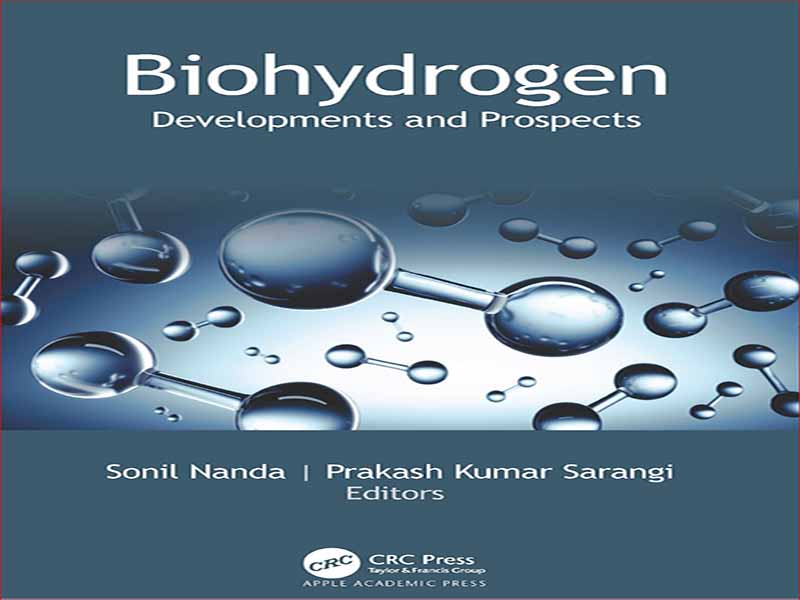- عنوان کتاب: Biohydrogen Developments and Prospects
- نویسنده: Sonil Nanda, Prakash K. Sarangi
- حوزه: هیدروژن
- سال انتشار: 2022
- تعداد صفحه: 242
- زبان اصلی: انگلیسی
- نوع فایل: pdf
- حجم فایل: 13.2 مگابایت
منابع انرژی تجدیدپذیر مانند خورشید، باد، جزر و مد، زمین گرمایی و زیست توده، برخی از جایگزین های امیدوارکننده برای سوخت های فسیلی هستند. برخی از نمونههای منابع زیست توده زباله عبارتند از: بقایای محصولات کشاورزی، زیست توده جنگلی، محصولات انرژیزا، محصولات مهاجم، کود دامی، لجن فاضلاب، زبالههای مواد غذایی، زبالههای جامد شهری، پسابهای صنعتی و سایر پسماندهای آلی. فنآوریهای مختلف تبدیل زباله به انرژی شامل مسیرهای ترموشیمیایی، هیدروترمال، فیزیکی/مکانیکی، بیولوژیکی یا یکپارچه میتوانند انرژی را به شکل سوختهای زیستی، برق زیستی، گرما و برق پاک و سایر منابع انرژی زیستی به دست آورند. سوخت های زیستی حاصل از زیست توده زباله می تواند سوخت جامد، مایع یا گاز باشد. بیوهیدروژن یک سوخت زیستی گازی امیدوارکننده با کاربردهای آینده نگر در ترکیب حرارت و نیرو، سلول های سوختی یا پیش سازها برای تولید مواد شیمیایی است. هیدروژن همچنین می تواند از طریق مسیرهای ترموشیمیایی کاتالیزوری (مانند سنتز فیشر-تروپش) یا بیوکاتالیستی بیولوژیکی (مانند تخمیر گاز سنتز) به سوخت های هیدروکربنی مایع و مواد شیمیایی با ارزش افزوده تبدیل شود. این کتاب برخی از پیشرفتهای اخیر در تولید و استفاده از بیوهیدروژن را پوشش میدهد. این کتاب به اصول و جنبه های کاربردی تولید بیوهیدروژن می پردازد، با تمرکز بر تحقیقات جهانی معاصر، بر عوامل فنی، زیست محیطی، اجتماعی-اقتصادی و فنی-اقتصادی آنها تأکید می کند.
Renewable energy sources, such as solar, wind, tidal, geothermal, and biomass, are some promising alternatives to fossil fuels. Some of the examples of waste biomass resources are agricultural crop residues, forestry biomass, energy crops, invasive crops, cattle manure, sewage sludge, food waste, municipal solid waste, industrial effluents, and other organic residues. Different waste-to-energy technologies involving thermochemical, hydrothermal, physical/mechanical, biological, or integrated pathways can derive energy in the form of biofuels, bio-electricity, clean heat and power, and other bioenergy sources. Biofuels derived from waste biomass can be solid, liquid, or gaseous fuels. Biohydrogen is a promising gaseous biofuel with prospective applications in combined heat and power, fuel cells, or precursors for chemical production. Hydrogen can also be converted to liquid hydrocarbon fuels and value-added chemicals through catalytic thermochemical (e.g., Fischer-Tropsch synthesis) or biocatalytic biological (e.g., syngas fermentation) pathways. This book covers some recent advances in the production and utilization of biohydrogen. The book addresses the fundamentals and applied aspects of biohydrogen production, focusing on contemporary global research, emphasizing their technological, environmental, socio-economic, and techno-economic factors.
این کتاب را میتوانید از لینک زیر بصورت رایگان دانلود کنید:
Download: Biohydrogen Developments and Prospects




































نظرات کاربران